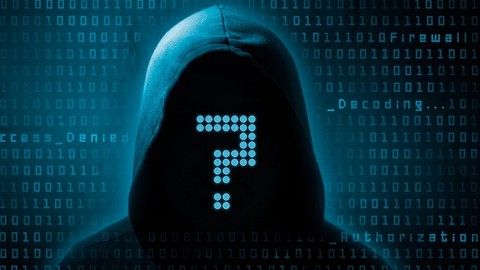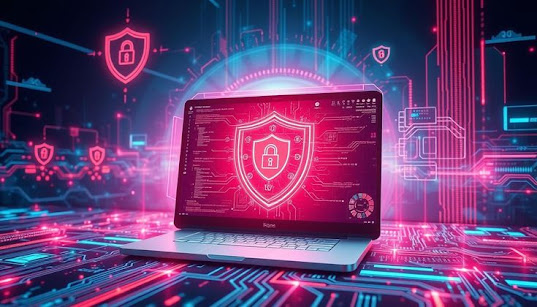AI in Cybersecurity: Guard or Threat?
AI in Cybersecurity: Guard or Threat?
Introduction: A Double-Edged Sword
Artificial Intelligence (AI) has woven itself deeply into the fabric of modern cybersecurity. Its power to automate, predict, and analyze threats has given defenders new strength. But here's the twist: cybercriminals are using AI too. In 2025, we find ourselves facing a serious dilemma—is AI more of a guardian or a potential threat to our digital security?
1. AI as a Cybersecurity Guard
a) Real-Time Threat Detection
Traditional security systems often fall short when it comes to zero-day attacks. AI changes this by offering real-time monitoring and behavioral analysis. Tools like EDR (Endpoint Detection and Response) systems use machine learning models to catch anomalies instantly.
b) Automated Incident Response
One of the most significant advantages of AI is its ability to automate repetitive security tasks. AI-driven systems can shut down malicious processes, isolate infected machines, and alert security teams—all within seconds.
c) Threat Intelligence & Prediction
AI can analyze massive datasets to predict future attacks before they happen. Using historical threat data and live monitoring feeds, these systems can identify new variants of malware or phishing tactics.
d) Improved Accuracy and Reduced False Positives
False alarms can overwhelm IT teams. With AI, accuracy is significantly improved. Machine learning algorithms learn from past data to distinguish between legitimate actions and real threats more reliably.
2. AI as a Cybersecurity Threat
a) AI-Generated Phishing and Deepfakes
Cybercriminals are now using generative AI models to craft highly convincing phishing emails and fake audio/video. These deepfakes can imitate real voices or mimic CEOs, tricking employees into transferring funds or leaking data.
b) Automated Vulnerability Exploits
Just as defenders use AI for analysis, attackers are now training AI to find vulnerabilities in software and exploit them automatically. This significantly reduces the time needed to launch large-scale cyberattacks.
c) Weaponizing AI for Advanced Persistent Threats (APTs)
Advanced threat groups use AI to run stealthier, longer, and more targeted attacks. These APTs can stay undetected for months while quietly collecting sensitive information.
d) Data Poisoning and Adversarial Attacks
AI systems can be manipulated using adversarial data inputs. Attackers can inject subtly modified data to confuse AI models, making them ignore malware or misclassify threats.
3. The Ethical Dilemma
As AI gets smarter, it forces us to address a growing concern: how much autonomy should AI have in cybersecurity? Can we trust it to make complex decisions during a crisis? What happens if an AI system mistakenly shuts down critical infrastructure thinking it's under attack?
Transparency, accountability, and regulation will play a massive role in defining how AI is used ethically in cyber defense. Clear audit trails and human oversight are crucial.
4. The Human-AI Partnership
Despite the rise of automation, human insight remains essential. The best approach in 2025 is a hybrid one: AI handles scale and speed, while humans provide judgment and context. Cybersecurity experts are now training AI systems while also learning to interpret and guide AI decisions.
5. Real-World Applications and Case Studies
a) AI-Powered SOCs (Security Operations Centers)
Many organizations are now running AI-integrated SOCs. These centers use AI to prioritize alerts, detect threats in real-time, and respond autonomously. It cuts down investigation times from hours to minutes.
b) Predictive Threat Models in Healthcare and Finance
Critical sectors like healthcare and banking are leveraging AI to predict data breaches based on user activity patterns. This proactive approach is helping save millions in potential damages.
c) AI in National Cyber Defense
Governments are now using AI to scan for threats against national assets. These systems process terabytes of network traffic and respond instantly to any suspicious activity.
6. Mitigating the Threat of Malicious AI
Security teams are developing countermeasures such as AI behavior fingerprinting, zero-trust architectures, and red team AI simulations to detect malicious AI activity.
We’re also seeing new global initiatives aimed at regulating and securing AI use. The Cyber AI Transparency Alliance (CATA) is one such example, pushing for ethical AI practices and shared threat databases.
Conclusion: The Path Forward
So, is AI a guard or a threat? The honest answer is: it’s both. It depends entirely on who controls it and how it's used. In the hands of defenders, it’s a transformative tool. In the hands of attackers, it's a force multiplier for harm.
The future of cybersecurity lies in collaboration between AI and humans, supported by ethical frameworks, smart regulations, and continuous education.
As we move deeper into 2025 and beyond, our greatest asset will be our ability to stay informed, adaptive, and vigilant—with AI as both our sword and shield.




Comments
Post a Comment